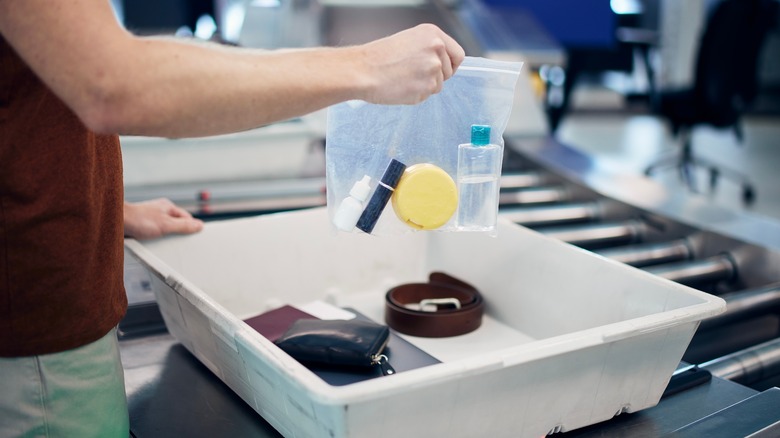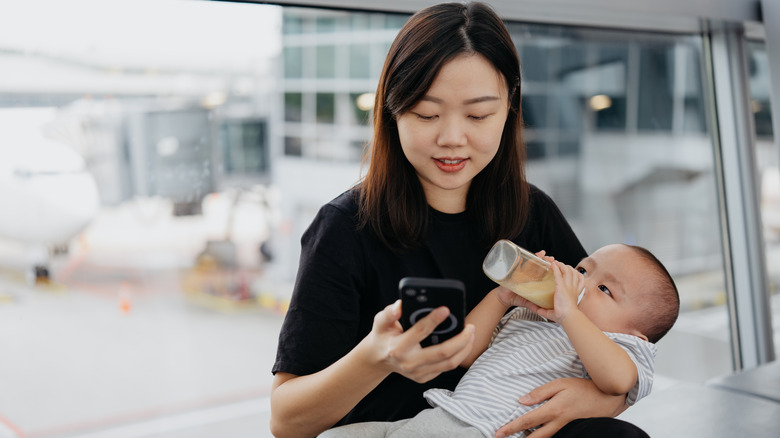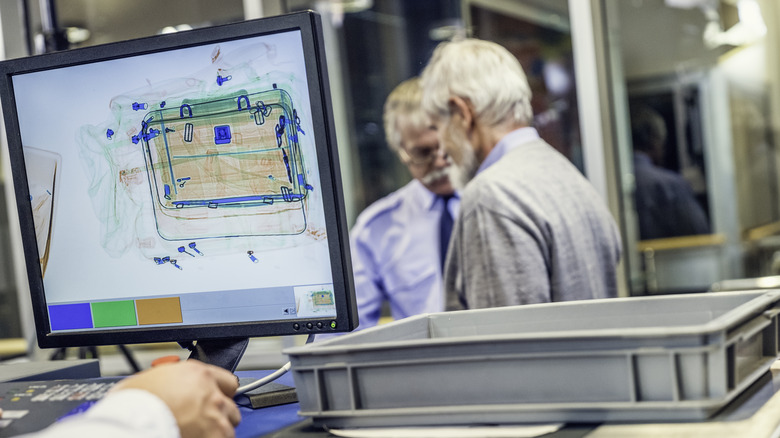These Important Travel Items Are Exempt From TSA's Liquid Rules
If you have traveled by plane at some point in the past 17 years, then you're familiar with the 3-1-1 rule. According to the United States Transportation Security Administration (TSA), each passenger entering an airport is only allowed to bring liquid, aerosols, gels, creams, and pastes of 3.4 ounces or less in volume in their carry-on luggage, and they must all be able to fit in a single quart-sized bag. In other words, (a little over) 3 ounces in 1 bag, per 1 person.
While the tragic events of 9/11 saw many changes for sky-bound travelers, this rule has actually been in effect since 2006. That year, a group of terrorists traveling from the United Kingdom to the U.S. and Canada attempted to smuggle liquid explosives onto planes by disguising them as soft drinks. Though some travelers have reported the full enforcement of the policy has relaxed a bit depending on the country and airport, the 3-1-1 rule is still officially on the books in the U.S. and around the globe. However, despite all the ongoing restrictions, there are a few items that have always been exempt from the strict liquid limitations imposed on air travel. Let's take a look at exactly what they are.
What items are exempt from the 3-1-1 rule?
Per the official TSA website, there are two categories of liquids, aerosols, gels, creams, and pastes that are exempt from the restrictions placed on carry-on baggage by the 3-1-1 rule: medications and infant and child nourishment.
When traveling with medications, including eye drops, insulin, or syringes, you are allowed to bring "reasonable quantities" for your trip. Although, you must remove them from your bag and declare them to the TSA agent when you're going through the security checkpoint. It's best to keep prescriptions in their original containers with your name on the labels. While this is not a requirement, it's a smart idea in the instance that TSA has further questions for you.
Similarly, the same parameters apply to baby formula, breast milk, and baby/toddler food, like puree pouches. These items are considered to be "medically necessary liquids," so more than 3.4 ounces are permitted. Ice packs, freezer packs, frozen gel packs, and other accessories to keep them cool are also acceptable in carry-ons. To expedite the screening of these items, it's suggested that they be transported in clear, translucent containers.
Is the 3-1-1 rule here to stay?
As previously stated, some airports around the world have been easing up on their liquid limitations for travelers after nearly 20 years. According to the United Kingdom Department of Transport, the U.K. is set to install brand new tomography scanners that create 3D images of the contents of a person's bag. These advancements in airport scanner technology will no longer require passengers to remove electronics from their bags or restrict liquids to 100 milliliters. Currently, the projected date for these changes to fully take effect is June 2024.
However, don't expect the new technology to make the jump across the pond just yet. While the U.S. has introduced PreCheck and higher-capacity scanners to airports around the country to make the security checkpoint process easier, the number of airports under the TSA's jurisdiction makes a policy change of this magnitude require much more planning. Representatives from the organization estimate that the U.S. is still "years away" from being ready for the long-standing rule to be rescinded, with the timeframe predicted to be a potential five to seven years from this point (via Frommer's). Therefore, until the necessary adjustments and considerations are made and applied in a more widespread fashion, those who fly the friendly skies will have to abide by the 3-1-1 rule (with a few notable exceptions).


